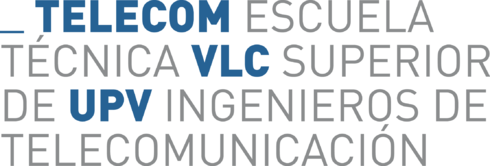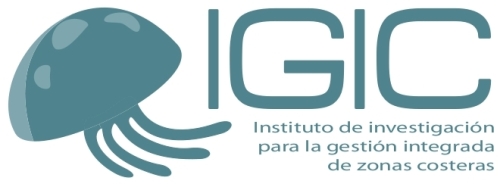keynote Speakers
keynote Speaker 1:
Prof. Dr. Vicente Casares-Giner
Title:
Mobility models for mobility management
Abstract:
The main goals of today’s wireless mobile telecommunication systems are to provide both, mobility and ubiquity to mobile terminals (MTs) with a required quality of service. By ubiquity we understand the ability of a MT to be connected to the network anytime, anywhere, regardless of the access channel’s characteristics. In this talk we deal with mobility aspects. We provide some basic background on mobility models that are being used in performance evaluation of relevant mobility management procedures, such as handover and location update. For handover, and consequently for channel holding time, we revisit the characterization of the cell residence time. Then, based on those previous results, models for the location area residence time are built. Cell residence time can be seen as a micro-mobility parameter while the latter can be considered as a macro-mobility parameter; and both have a significant impact on the handover and location update algorithms.
Biography:
Vicente Casares-Giner (IEEE M’75, IEEE LM’17), assistant professor (1974), associate professor (1985), and full professor (1991). He obtained the Telecommunication Engineering degree in October 1974 from Escuela Técnica Superior de Ingenieros de Telecomunicación- Universidad Politécnica de Madrid (ETSIT-UPM) and the Ph.D. in Telecommunication Engineering in September 1980 from ETSIT-Universitat Politècnica de Catalunya (ETSIT-UPC), Barcelona. During the period 1974–1983 he worked on problems related to signal processing, image restoration, and propagation aspects of radio-link systems. In the first half of 1984 he was a visiting scholar at the KTH Royal Institute of Technology in Stockholm, dealing with digital switching and concurrent programming for Stored Program Control (SPC) systems. From September 1, 1994 until August 31, 1995, he was a visiting scholar at WINLAB-Rutgers University-USA, working with random access protocols in wireless networks, wireless resource management, and land mobile trunking system. During the 90’s he worked in traffic and mobility models in several European Union (EU) projects. Since September 1996, he is at ETSIT-Universitat Politècnica de València (ETSIT-UPV), Valencia, Spain. During the 00’s and 10’s he has been involved in several National and EU projects. Professor V. Casares-Giner has published several papers in international magazines and conferences. He has served as General co-chair in the ISCC 2005, in the NGI-2006 and as TPC member in several conferences and workshops. His main interest is in the area of performance evaluation of telecommunication systems.
keynote Speaker 2:
Prof. Dr. Narcis Cardona
Title:
Wireless Biomedical Networks, a missing scenario in 5G
Abstract:
Wireless health sensors are evolving from the current wearables to future implanted devices. This will enable a new generation of eHealth services and applications in which the human body become a moving network, giving the user an enhanced and intuitively interaction with surrounding technologies. But these wireless body environment networks (WBENs) are mainly supposed to revolutionize health monitoring, with huge number of possible applications in home, hospital, elderly care and emergency cases. The WBEN elements have to use low power transmissions, and be at the same time as much efficient as possible in terms of throughput, robustness, latency and reliability.
Many of the documents published about 5G definition include eHealth as one of the application scenarios of this next generation of Mobile Networks, but the actual development of the 5G standards is still not covering any specific solution for the integration of moving WBENs, and none of those approaches related to vehicles, machines, or other types of sensors in the 5G IoT world will apply to the characteristics of such future Wireless Biomedical Networks. Should this scenario be considered already for a potential 6th Generation? Can it still be integrated in the 5G framework or will be driven by the market as one more standalone technology?
This talk describes the technical challenges open in these wireless biomedical sensor networks, reviews the ongoing work in this area in Europe and US, and shows some initial results of the European ITN project WIBEC.
Biography:
MsC (1990), PhD (1995), Prof.(2001). Since October 1990 he is with the Communications Department of the Polytechnic University of Valencia (UPV), currently Full Professor on Signal Theory and Communications. Prof. Cardona is Director of the Research Institute of Telecommunications and Multimedia Applications (iTEAM), with 150 researchers including assistant professors & research fellows. Additionally, he is the Director of the Mobile Communications Master Degree (since 2006). Prof. Cardona has led National and European research projects, Networks of Excellence and other research forums in FP6, FP7 and H2020, always in Mobile Communications aspects. At European scale, he has been Chairman of the EU Action COST IC1004 (2011-2015), Vice-Chairman of the Actions COST273 (2003-2006) and COST IC15104 IRACON (2016- ), Chairman of the National Network of Excellence ARCO5G (2015-2016), and member of the Steering Board of METIS (7FP; 2011-2015), METIS2 (H2020 5GPPP; 2015-2017), and WIBEC (H2020 ITN; 2016-2019). He has organised and participated to the Committees of international conferences, being General Chair of IEEE ISWCS 2006 and IEEE PIMRC 2016, and TPC Chair of IEEE VTC 2015, among others. His current research topics are Radio wave propagation, Planning and Optimisation of Mobile Access Networks, Digital Multimedia Broadcasting, Dynamic Spectrum Management and Wireless Body Environment Communications.




